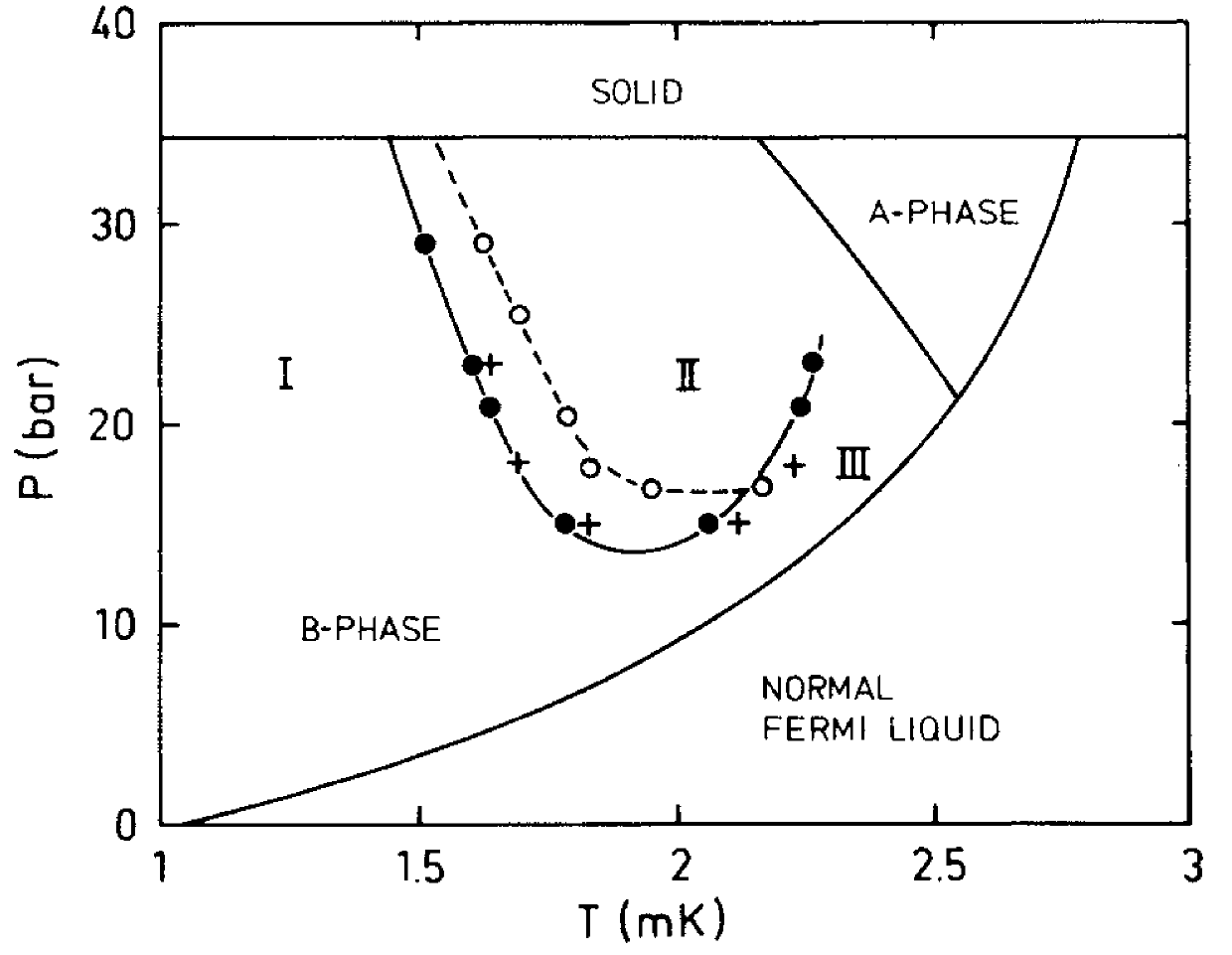FIGURE Observed transitions on the phase diagram of
rotating He3-B: open circles, H = 284 G (NMR
experiment); closed circles, H = 0; crosses, H
= 40 G (gyroscope experiment). There is a slight
difference between in the vortex core transition (open
circles) and the superflow transition (closed circles and
crosses); near Tc, the influence of the magnetic
field on the vortex core structures becomes important,
which may explain the difference in the transition curves
when approaching the Tc curve.
|
|
The first-order
phase transition in the core structure of quantized
vortices, first observed using NMR methods, was
investigated in this work in more detail using both
the NMR and gyroscopic techniques.
Re-entrant shape of the transition curve on the pT
plane was observed in both experimental
investigations. The gyropscopic experiments revealed
that, besides discontinuous magnetic properties, the
two vortex types display clearly different critical
flow velocities.
At
the time of this work, only the vortex present in
regions I and III could be identified. According to
Ginzburg-Landau theory, this vortex has a core
occupied by A-phase liquid, which is responsible for the
susceptibility anisotropy and by ferromagnetic
-phase
liquid, with spontaneous magnetization.
|
